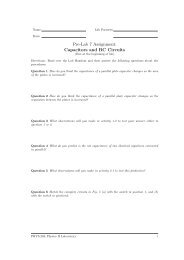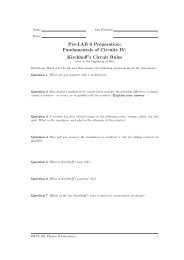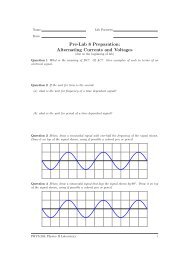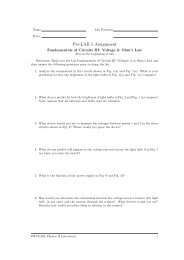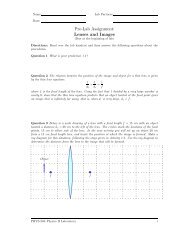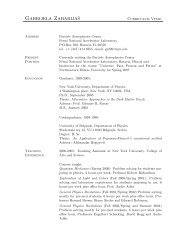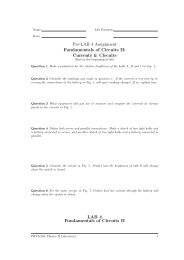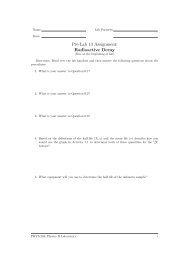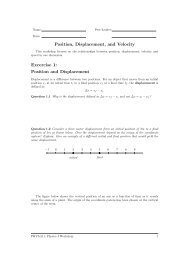Fundamentals of Circuits I: Current Models, Batteries & Bulbs
Fundamentals of Circuits I: Current Models, Batteries & Bulbs
Fundamentals of Circuits I: Current Models, Batteries & Bulbs
Create successful ePaper yourself
Turn your PDF publications into a flip-book with our unique Google optimized e-Paper software.
<strong>Fundamentals</strong> <strong>of</strong> <strong>Circuits</strong> I: <strong>Current</strong> <strong>Models</strong>, <strong>Batteries</strong> & <strong>Bulbs</strong> v 0.1<br />
<strong>Current</strong> 2 (A)<br />
<strong>Current</strong> 1(A)<br />
Time (s)<br />
Step 3: Zero the probes with the switch open.<br />
Step 4: Set up the circuit in Fig. 8 with the terminals marked + and − as shown. Begin<br />
graphing, and try closing the switch for a couple <strong>of</strong> seconds and then opening it for a<br />
couple <strong>of</strong> seconds. Repeat this several times while you are graphing. Sketch your graphs<br />
on the axes above.<br />
Note: You should observe carefully whether the current through both probes is essentially<br />
the same, or if there is a significant difference (more than a few per cent), and whether it<br />
is positive or negative.<br />
Question 1.16 How could you determine if an observed difference in the currents read by the<br />
top and bottom current probes is real or if it is the result <strong>of</strong> small calibration differences in the<br />
current probes<br />
Question 1.17 Did you observe a significant difference in the currents at these two locations<br />
in the circuit, or was the current the same<br />
Question 1.18 Based on your observations, which models seems to correctly describe the behavior<br />
<strong>of</strong> the current in your circuit. Explain carefully based on your observations.<br />
PHYS-204: Physics II Laboratory 11





